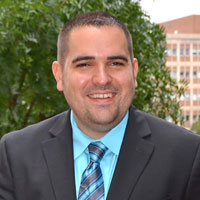Gillings faculty urge World Health Organization to address potential airborne spread of COVID-19
July 14, 2020
A group of 239 scientists, including three faculty from the UNC Gillings School of Global Public Health, have penned a letter to the World Health Organization (WHO) citing evidence for potential transmission of COVID-19 via airborne particles and urging the agency to update its recommendations to more effectively prevent the spread of the virus.

Dr. Barbara Turpin

Dr. Glenn Morrison

Dr. Jason Surratt
The Gillings faculty who have signed the letter include Barbara Turpin, PhD, professor and chair of the Department of Environmental Sciences and Engineering, as well as Professors Jason Surratt, PhD, and Glenn Morrison, PhD.
As research into SARS-CoV-2, the virus that causes COVID-19, has progressed, Turpin, who is an expert in aerosol science, has expressed concern at mounting evidence suggesting that viral particles are present in sub-micron aerosols, which are small enough to remain airborne for hours after being exhaled. The aerosol-borne virus has the potential to persist in indoor air beyond the six feet suggested by physical distancing guidelines, especially in settings with poor ventilation.
“We know that most of the particles emitted when talking, coughing and singing are sub-micron,” Turpin explained. “These aerosols are formed from the sheering of respiratory fluids where SARS-CoV-2 is found, and virus RNA has been found in expiratory sub-micron aerosols. When emitted, this plume of particles mixes rapidly throughout a room, and there is some evidence that the virus remains viable for at least one hour in aerosol. If the emission rate is high enough and one spends enough time in the same room as an infected person, it is plausible that one could become infected even from across the room. Observations from several recent outbreaks are suggestive of aerosol transmission.”
The WHO has been resolute in its position that COVID-19 is spread primarily via close, direct or indirect contact with respiratory droplets that can be expelled when an infected person coughs, sneezes, talks or sings. Such respiratory droplets, about 100 microns in diameter, fall to the ground in seconds. However, recent incidents of outbreaks at restaurants and choir practices where physical distancing has been observed seem to indicate that the risk of transmission in indoor settings may be higher than earlier data suggested.
Shortly after the group submitted the letter on July 6, the WHO released a brief acknowledging the possibility of airborne transmission. However, research has yet to determine the relative importance of droplet vs aerosol transmission, the aerosol emission rate and the viral dose needed for it to infect a person who comes into contact with it.
This news comes at a time when the United States is struggling with efforts to control a rising COVID-19 case count while initiating phased re-openings of stores, restaurants, schools and other businesses where large groups of people must gather indoors. Uncertainty surrounding the ways the virus can spread from person-to-person have heightened debates about the necessity of wearing masks, maintaining physical distance from others and the level of risk posed by activities in crowded areas or enclosed spaces.
“Wearing a mask, even while maintaining distance, is particularly important to reducing aerosol emission and maintaining distance reduces risk by reducing the number of potentially infected people in the same indoor space,” said Turpin. “However, aerosol transmission is particularly concerning in poorly ventilated spaces, and one’s risk increases with increasing time in that space.”
In its brief, the WHO urged scientists to continue research in order to further understand how COVID-19 might spread through the air. Turpin is principal investigator on a study recently approved for funding from the National Science Foundation that aims to measure viable airborne SARS-CoV-2 and study factors affecting its viability in aerosol particles. It is set to begin in August.
Contact the UNC Gillings School of Global Public Health communications team at sphcomm@unc.edu.
